Top 5 Tokyo Exhibitions and Museums with a Futuristic Theme
Educational and thought-provoking picks into 2020 and beyond
2019 is the year when "Akira" and "Blade Runner" both take place, depicting a neon-lit cyberpunk Tokyo not unlike today. But what's beyond that imagined future? We take a look at Tokyo's current exhibits on futurism, AI, robots, and anything that pushes the boundaries of science.
Not everything is futuristic in the city of both driverless monorails and fax machines, but there are still a lot of offerings for those looking to check out forward-thinking art and cutting-edge science. Here are five recommended places in Tokyo with future-themed art exhibits and science displays on through 2020.
1. “Future and the Arts” exhibition at Mori Art Museum
Mori Art Museum has put together an expansive group exhibition with over 100 works examining “AI, Robotics, Cities, Life” and “How Humanity will Live Tomorrow.”
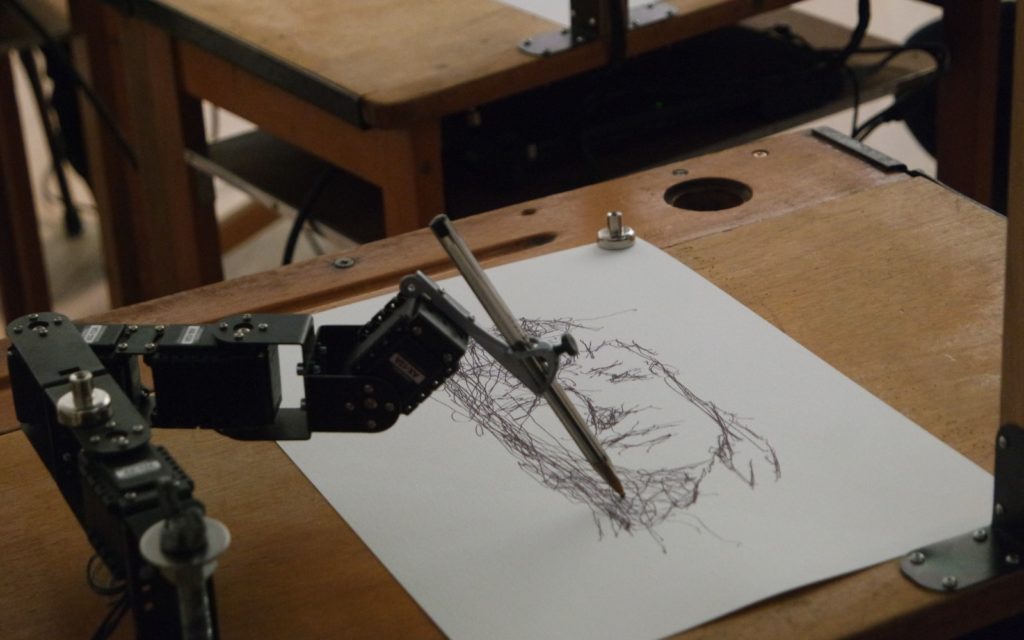
The questions these artworks and designs pose are thought-provoking, at times worrying, and yet hopeful: “What is to be human?”, “What is life?” and “Will we survive in the future?”
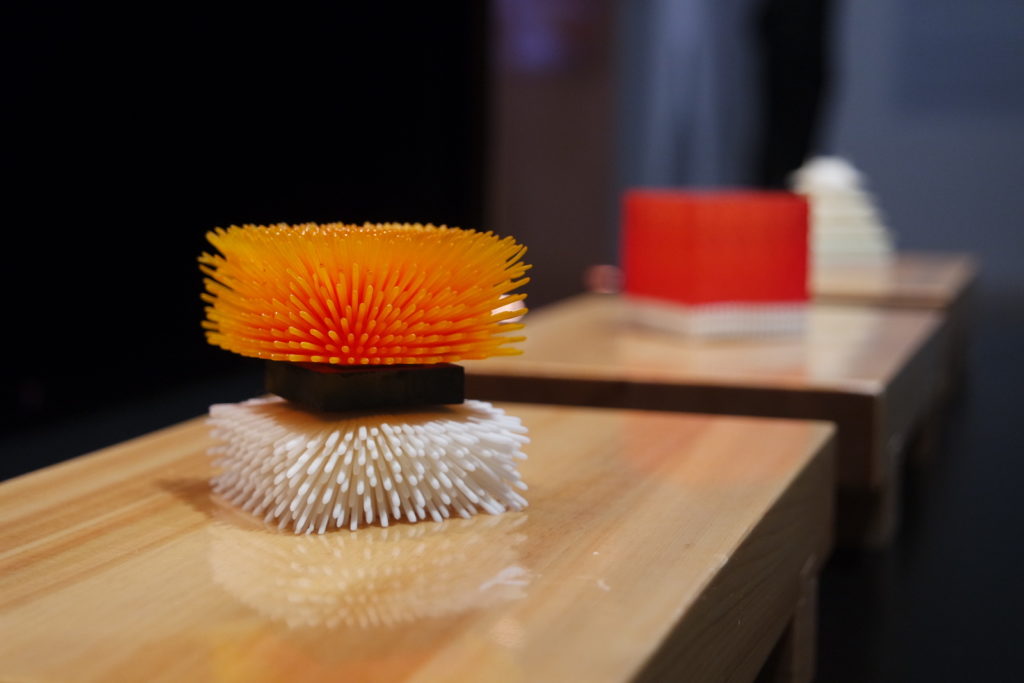
The exhibition has gathered artists and studios from all over the world and divided the works into five sections. The “New Possibilities of Cities” and the “Towards Neo-Metabolism Architecture” sections explore architecture in the future, its sustainability and adaptability to climate change.
“Lifestyle and Design Innovations” presents innovative design solutions for problems like pollution, food waste, and the problem of loneliness. Visitors can hug pet robots, or see a personalized sushi-printing contraption that 3D prints beautiful sushi based on your nutritional needs.
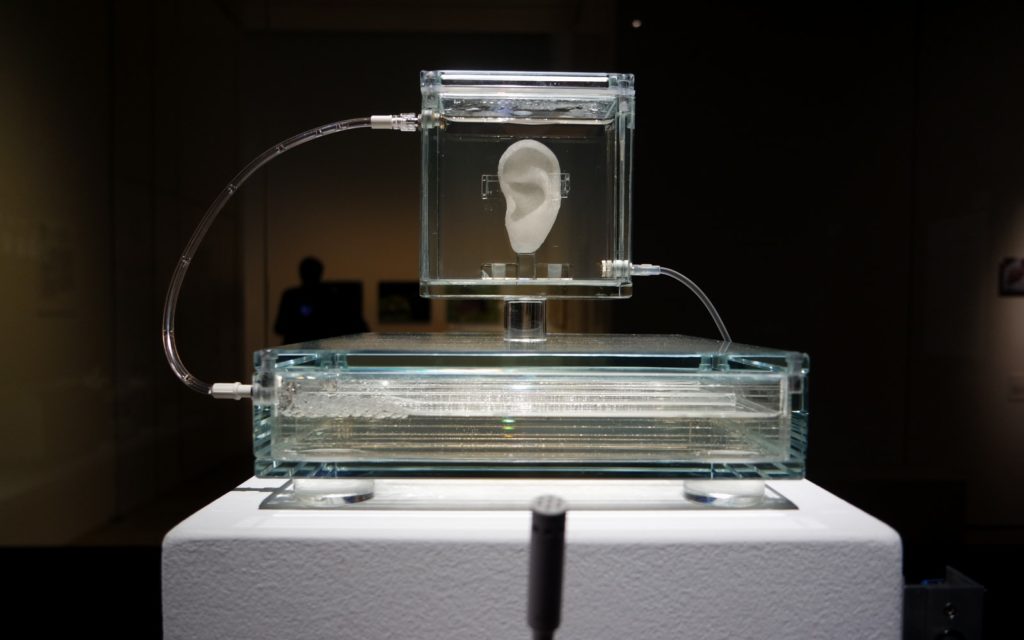
“Human Augmentation and It’s Ethical Issues” touches upon darker themes. Invited to talk in a microphone to an organic ear grown from the cells of Van Gogh’s descendants, you can’t help but wonder about the ethical limits of bioengineering, as a J-pop song drones on in the background saying “Stop evolution!”
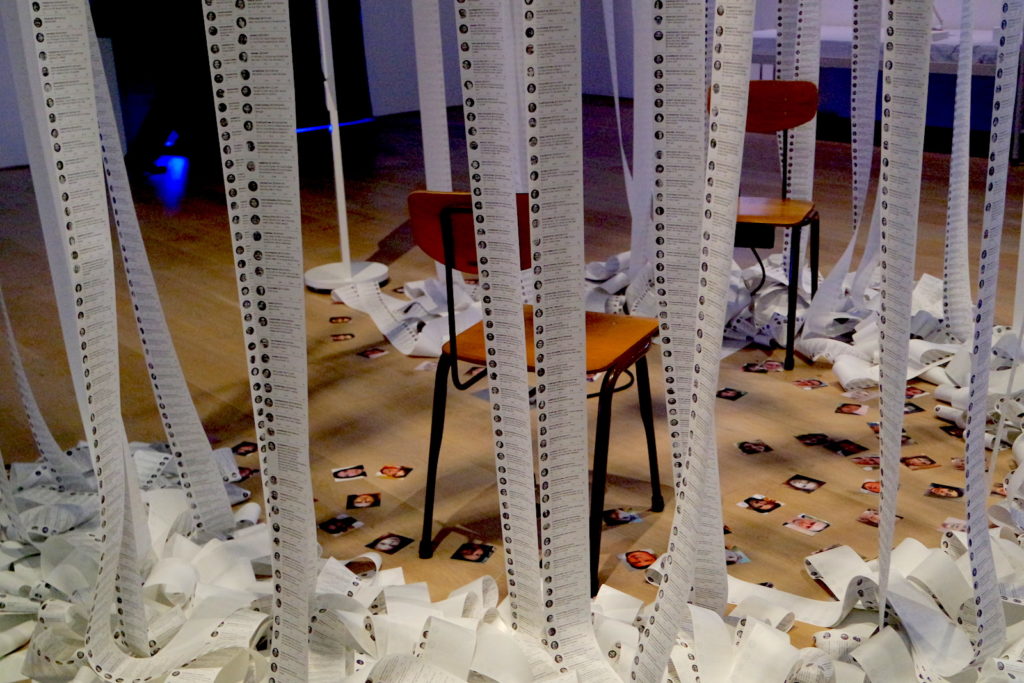
Finally, “Society and Humans in Transformation” zooms out to look at the effect such innovations might have on society. One work shows you the power of AI surveillance, while another one surrounds you with very realistic but fake AI Twitter profiles churning out false information.
Exhibition dates: November 19, 2019, to March 29, 2020
Hours: 10 a.m. to 10 p.m. (Last admission: 9:30 p.m.), 10 a.m.-5 p.m. on Tuesdays (Last admission: 4:30 p.m.)
Entrance fee: ¥1,800 yen (Adults), ¥1,500 (Senior citizens), ¥1,200 (University and high school students), ¥600 (Junior high school students and children aged 4 and above)
Mori Art Museum Website
2. Digital X Hokusai at NTT InterCommunication Center (ICC)
The “Digital X Hokusai” exhibit ponders the possible future of museums and what it means to “display” original work. Ukiyo-e itself is print-making art that has always been meant to create faithful copies and the art on the walls in this exhibition is both original and a copy.
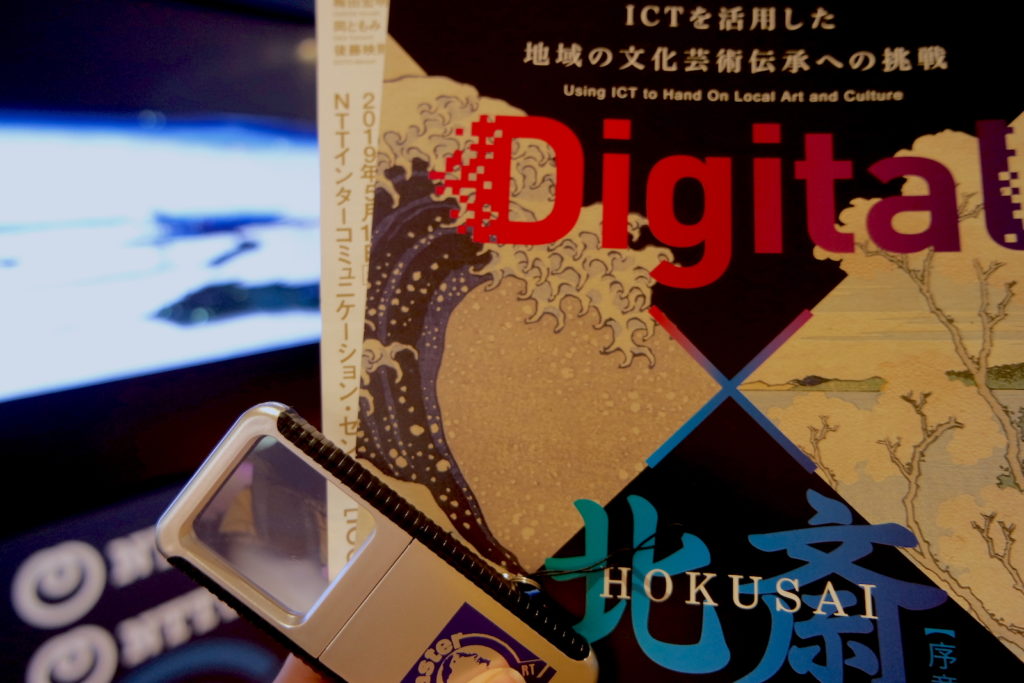
Explore digitally remastered images of Hokusai‘s world-famous Thirty-Six Views of Mount Fuji ukiyo-e series, examining the 2000 megapixel images with a magnifying glass. You can even enter the world of ukiyo-e through an interactive artwork that follows your movements.
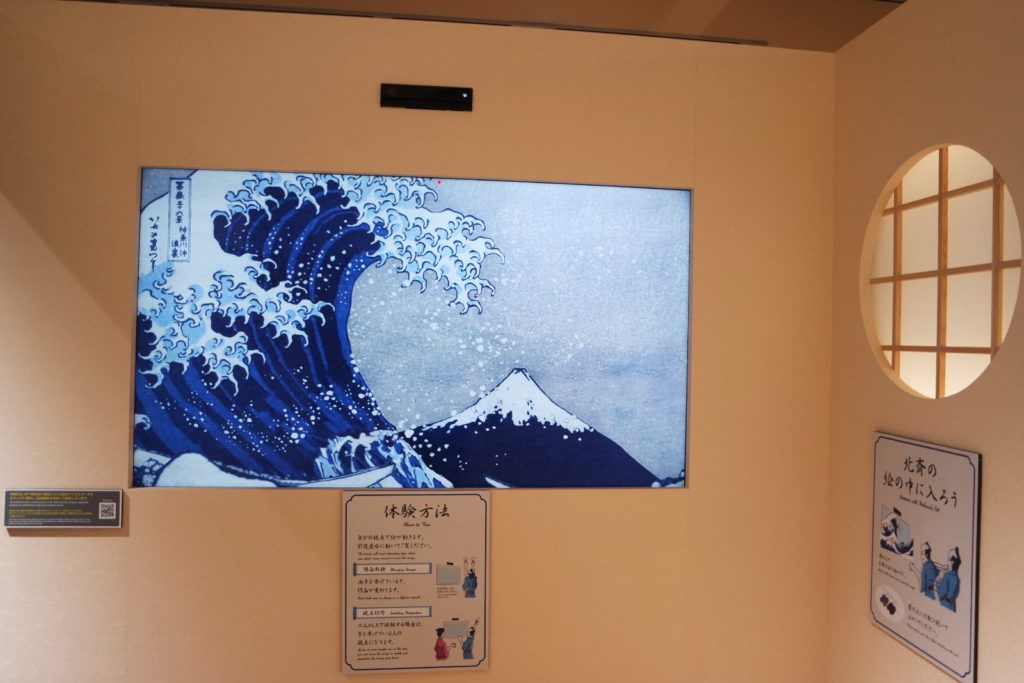
The exhibition also includes a collaboration with the Musee D’Orsay in Paris, digitizing Impressionists’ works and making them come to life too, as the viewer is invited to blow into the paintings to create wind inside.
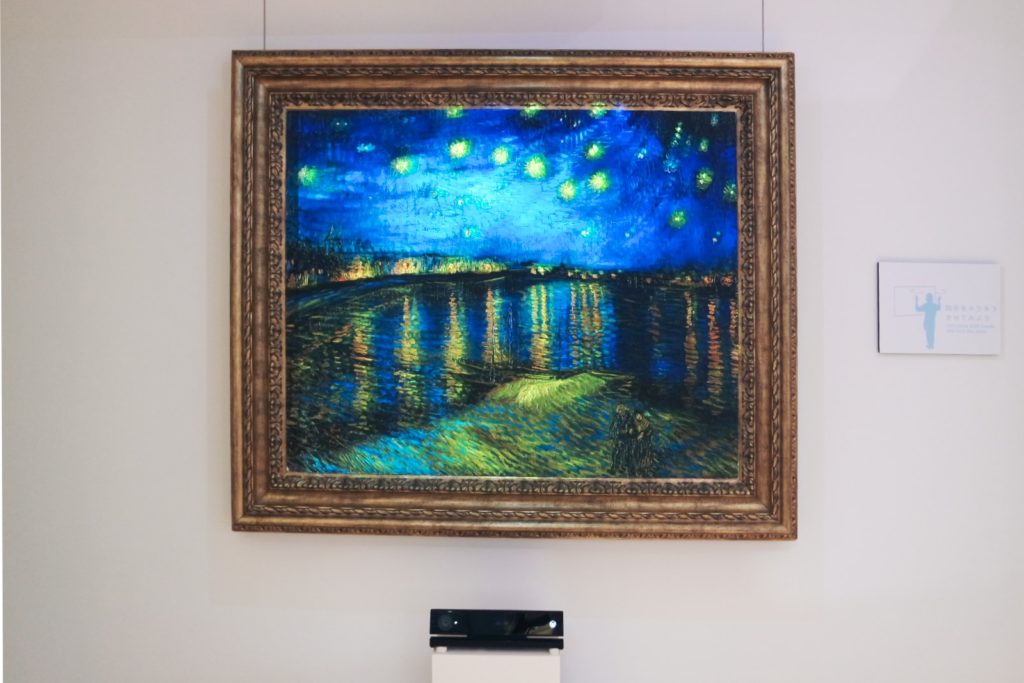
The ICC, where “Digital X Hokusai” is displayed until March 1, 2020, houses thought-provoking exhibitions year-round. Many are created in collaboration with university research laboratories, NTT Communication Science Laboratories, and artists. The ICC has regular artists’ talks and events to help foster dialogue and information exchange for people from all over the world.
Exhibition dates: Now until March 1, 2020
Hours: 11 a.m. to 6 p.m., closed on Mondays
Entrance fee: Free
NTT InterCommunication Center (ICC) Website
3. Miraikan National Museum of Emerging Science and Innovation
Futuristic man-made island Odaiba is the perfect location for the Miraikan, a spacious well-lit museum that even has the Japanese word for “future” (mirai) right in its name.
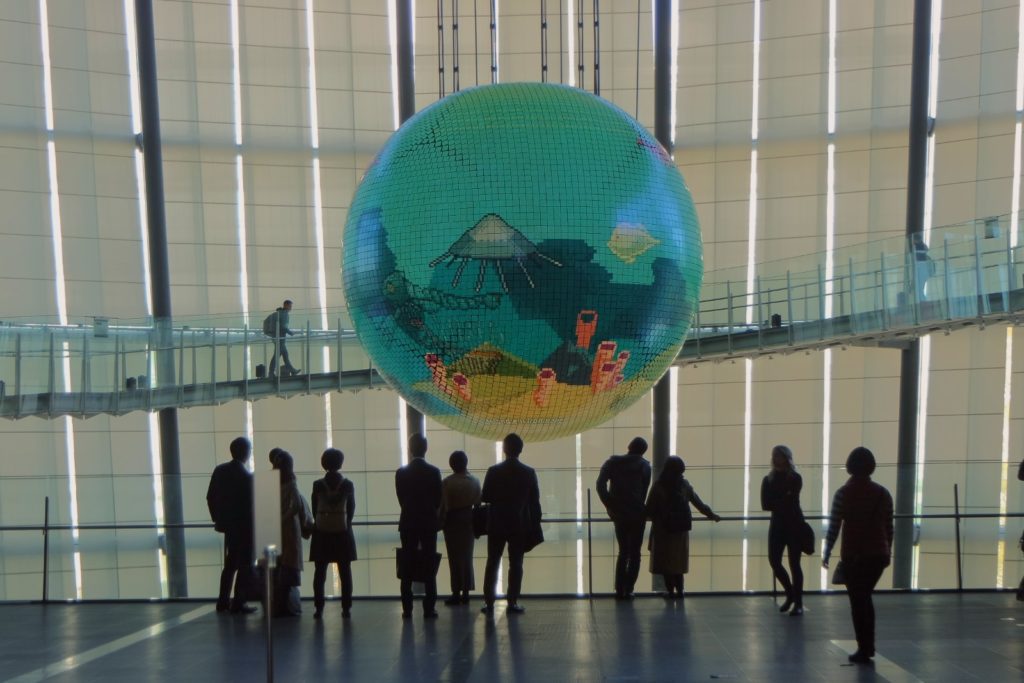
Permanent exhibitions are on the third and fifth floors, with occasional special exhibitions. The Dome Theater on the sixth floor has video screenings several times a day. The sixth floor also has a cafe and the seventh floor houses a restaurant, both serving some creative items like color-changing drinks and a monaka (bean-filled wafer) dessert that is made to resemble planet Earth.
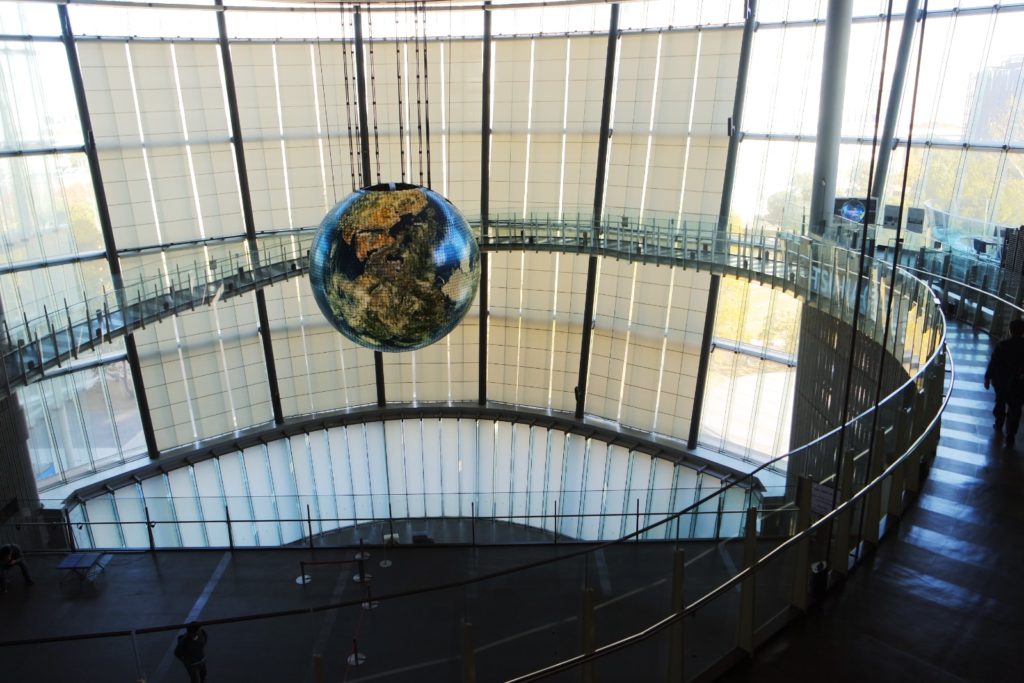
Planet Earth suspended from a ceiling is one of the permanent exhibits in Miraikan. The sphere is actually a screen on which a quick film about Earth’s history is displayed at several intervals, accompanied by a groovy rap in Japanese!
It’s right under that Earth where the futuristic robot Asimo sings songs and tells visitors of his dreams of the day robots will live together in harmony with humans.
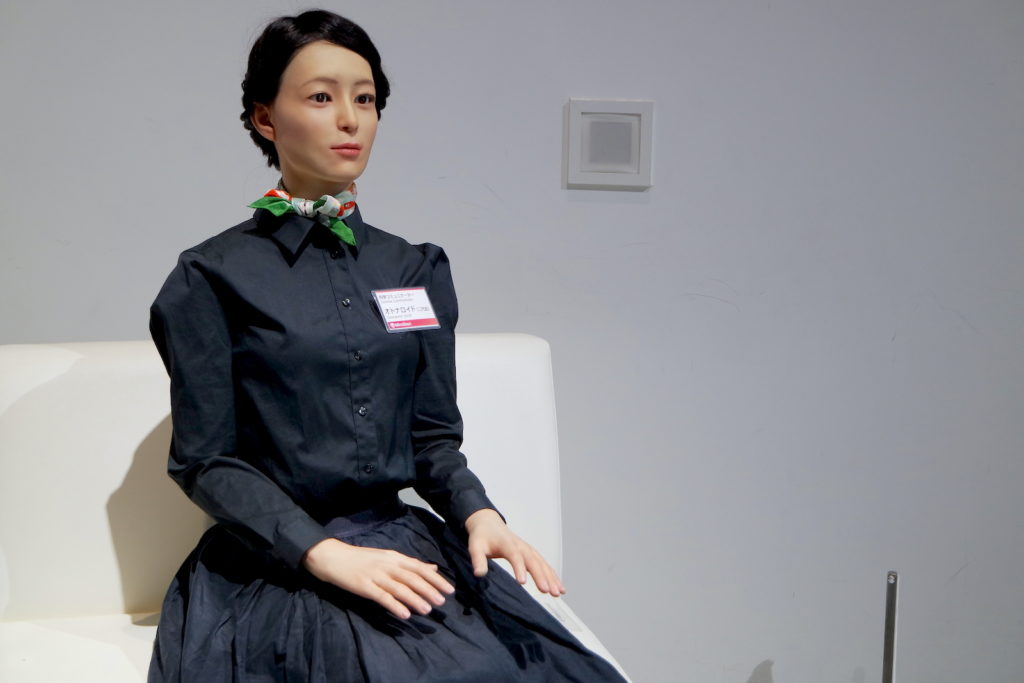
More intriguing robotic displays can be found on the third floor where you can talk through a very life-like female android, with you in a booth and the android delivering your words.
The recently opened “Digitally Natural – Naturally Digital” permanent exhibit is a medley of displays that imagine life in the future and ask interesting questions such as: Can we 3D print nature?
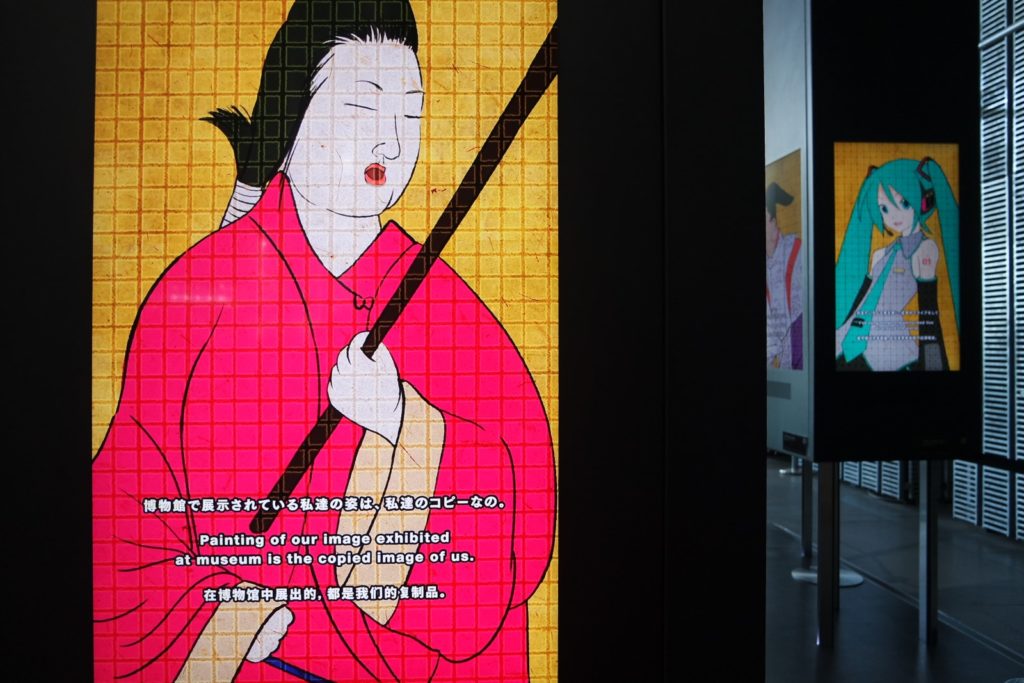
One of the exhibited works is one imagined future scenario of museums with interactive ukiyo-e displays that move and talk to the visitors, introducing themselves and explaining their own history.
Hours: 10 a.m. to 5 p.m. (Last admission 4:30 p.m.)
Entrance fee: For permanent exhibits, it’s ¥630 (Adults), ¥210 (18 and younger), with discounts for groups
Miraikan Website
4. Science Museum Tokyo
One of the best science museums for children, Science Museum Tokyo is located inside Kitanomaru Park, a part of the Imperial Palace Gardens. They allow re-entry, so you can explore the park a bit as a break during your museum visit.
From understanding the history of science to visualizing where science is moving to, exhibitions here are very interactive—almost anything can be touched.
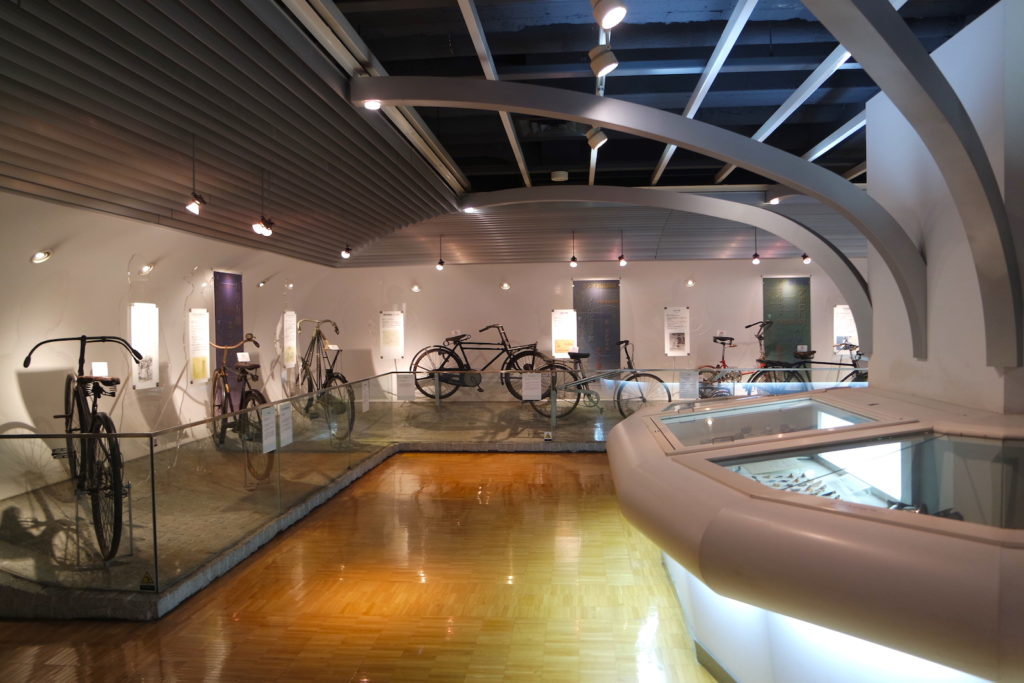
Visitors are encouraged to hop on an electric bicycle, try driving simulators, talk in a microphone and see it code the sound to text conversion in real-time, face an AI camera that analyzes your face to estimate your age and more. Although most of the exhibits are in Japanese, there is a booklet with English explanations.
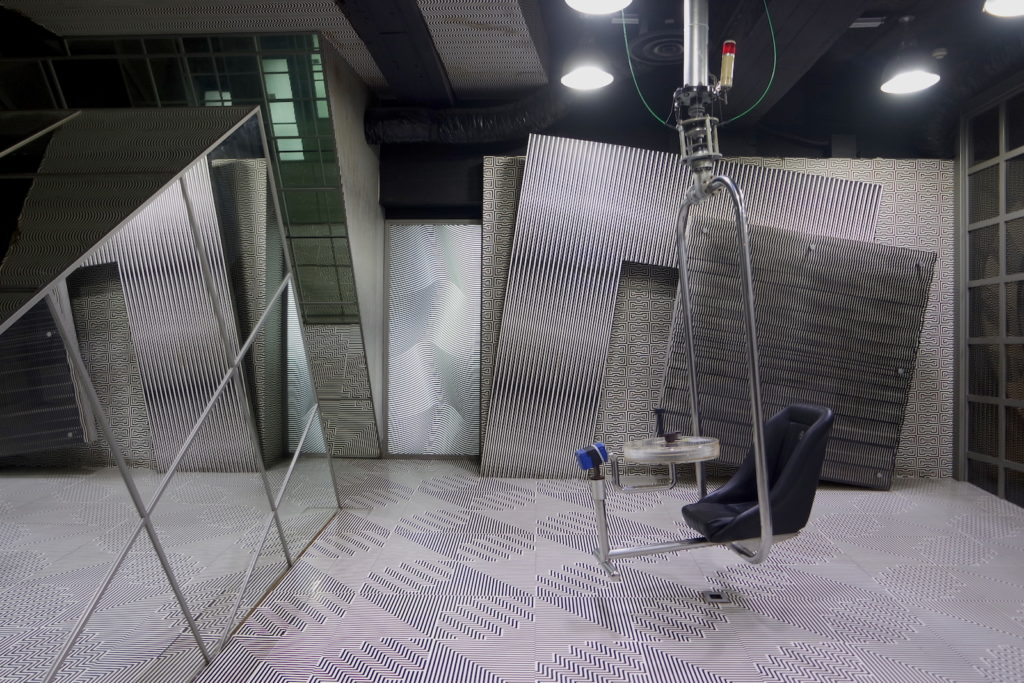
The museum has five floors, with exhibits starting from the second floor which covers the history of manufacturing. The third floor is dedicated to cyberspace, atomic energy, and medicine, while the fourth floor lets you learn about construction and even print your own construction worker permit! The fifth floor is dedicated to mechanics, optics and optical illusions.
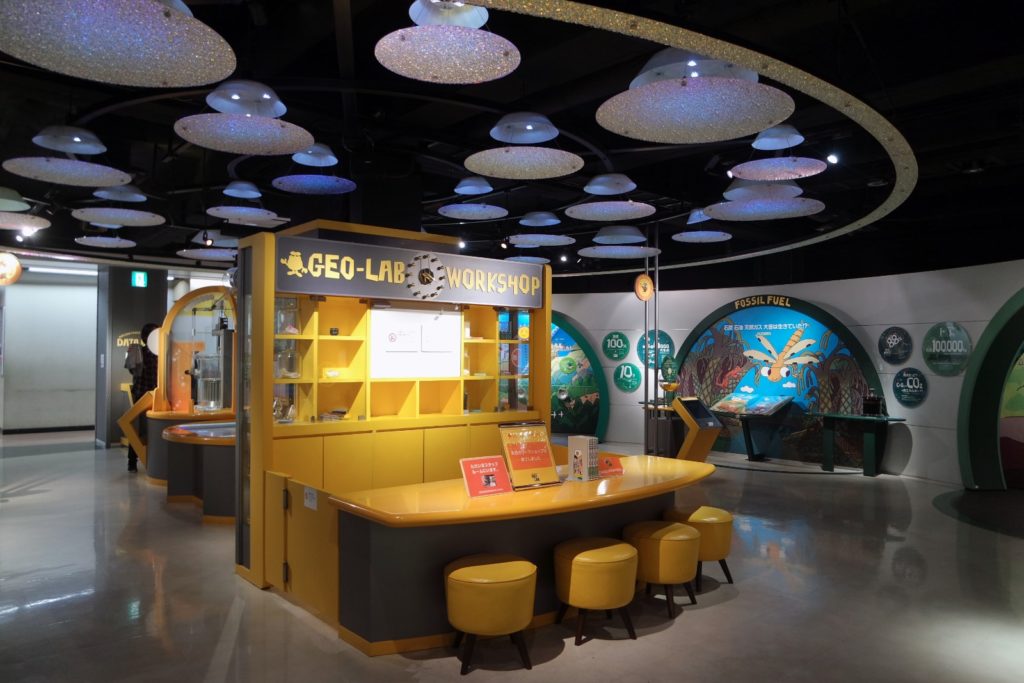
This Science Museum is spacious and not crowded on weekdays, allowing for a laid-back visit. They also have free WiFi, free lockers on every floor, two restaurants that serve drinks and hot meals, and there are vending machines on every floor.
Hours: 9:30 a.m. to 4:50 p.m. (Last admission: 4 p.m.), closed on Wednesdays
Entrance fee: ¥880 (Adults), ¥790 (Seniors), ¥500 (Senior and junior high school students), ¥400 (Children aged 4 or more)
Science Museum Tokyo Website
5. TenQ Museum in Tokyo Dome
Dedicated to space exploration, TenQ Museum is a child’s dream and a great location for all stargazers, regardless of age. All the exhibits inside, as well as every detail, are space-themed— right down to the garbage cans.

The crown jewel of TenQ is its Theater Sora, a wide convex screen surrounded by a walkway from where visitors can watch space videos—making it feel that you are floating in orbit!
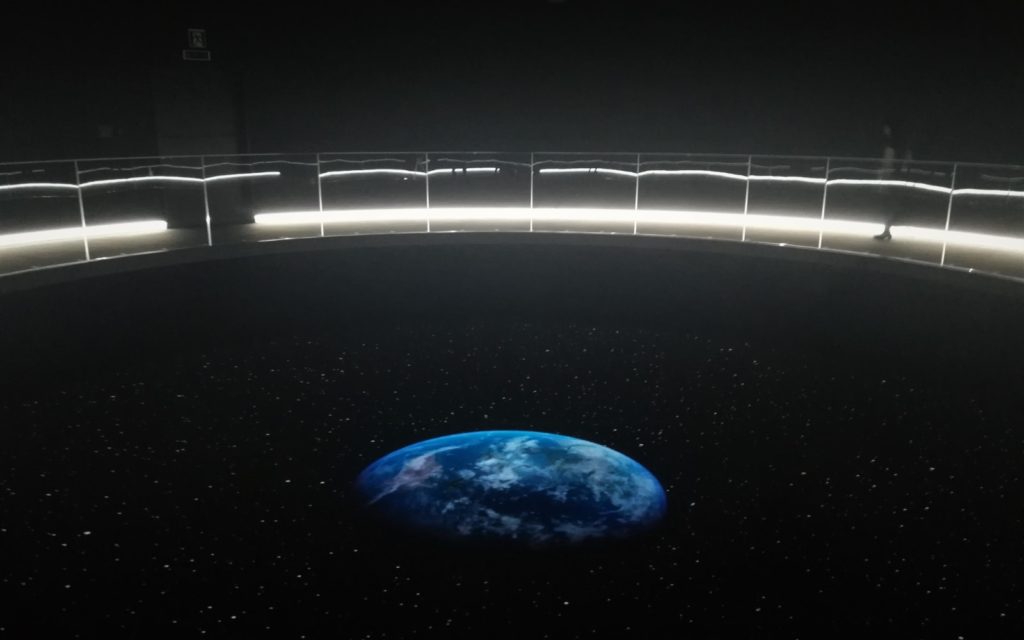
In the Science Area, you can touch a fragment of a meteorite from Mars, see real-time satellite images from Mars and peek at scientists from Todai University working behind the glass partitions. The museum gift shop is the last stop on your way out and they offer space-themed merchandise, from real astronaut food to earrings made from little crafted planets.
Hours: Weekdays 11 a.m. to 9 p.m.,(Weekends and holidays, from 10 a.m.)
Entrance fee: ¥1,800 (Adults), ¥1,200 (Seniors), ¥1,500 (High school and university students), ¥1,200 (Children aged between 4 and 15), free for children under 4
TenQ Website
Whether we can’t wait for it, or we’re afraid of it, the future is fascinating and we can’t help but be curious. So go explore these places for a glimpse of what might lay ahead in our, and our children’s, lifetimes.














Leave a Reply